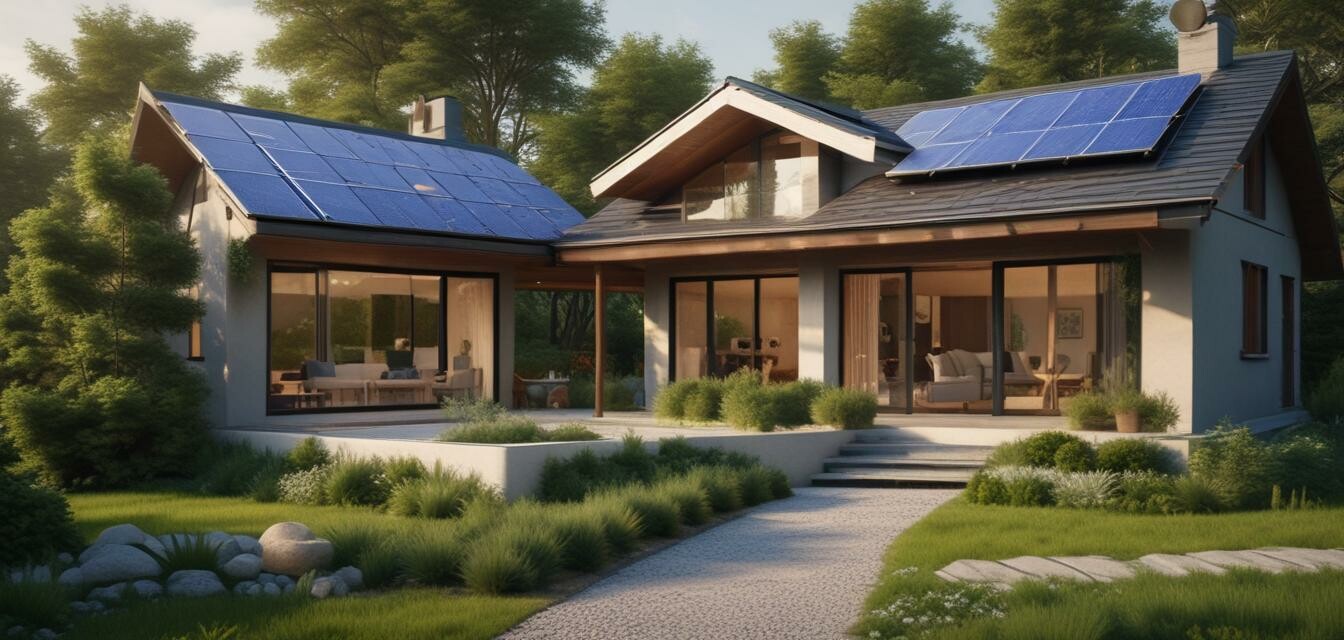
How to Reduce Your Home's Energy Footprint
- Using energy-efficient appliances can significantly lower your energy consumption.
- Simple habits can contribute to decreasing your overall energy footprint.
- Regular maintenance of appliances enhances their efficiency.
- Consider smart home technology to monitor and control energy use.
- Invest in insulation and other structural improvements to keep energy costs down.
Reducing your home's energy footprint is essential not only for saving money on your utility bills but also for contributing to a greener planet. By integrating energy-efficient appliances and making simple yet effective changes in your daily habits, you can make a significant impact on your energy consumption.
Understanding energy-efficient appliances
Energy-efficient appliances are designed to use less energy to perform the same tasks as their traditional counterparts. By switching to these appliances, you're making an investment that will pay off in the long run.
Benefits of energy-efficient appliances
- Lower utility bills
- Reduced carbon footprint
- Government rebates and incentives in many regions
- Improved performance and durability
Strategies for reducing energy consumption
Here are some effective strategies you can implement to reduce energy consumption in your home:
1. Invest in energy-efficient appliances
Look for appliances with the ENERGY STAR label, which indicates they meet energy efficiency guidelines set by the U.S. Environmental Protection Agency. You can find great options for appliances in our Air Conditioners, Dishwashers, and other categories.
2. Optimize appliance use
Follow these tips to maximize your appliance efficiency:
- Use cold water for washing clothes whenever possible.
- Run your dishwasher with a full load, rather than washing dishes by hand.
- Keep your refrigerator at the optimal temperature (between 35°F and 38°F).
3. Embrace smart technology
Smart home devices can help you monitor and adjust your energy usage:
- Smart thermostats can learn your routine and optimize heating and cooling.
- Smart plugs allow you to turn off devices remotely.
- Energy monitors provide real-time data on your energy consumption.
4. Regular maintenance
Ensure your appliances are running efficiently by:
- Cleaning refrigerator coils regularly.
- Changing air filters in heating and cooling units.
- Scheduling annual maintenance for critical appliances.
Structural improvements for energy savings
In addition to upgrading your appliances, consider the following structural changes to your home:
- Insulate your walls and attic to prevent heat loss.
- Seal windows and doors to eliminate drafts.
- Install energy-efficient windows that reduce heat transfer.
Comparison of energy-efficient appliances
Below is a comparison of various energy-efficient appliance types, showcasing their average energy consumption and savings:
| Appliance Type | Average Monthly Energy Consumption (kWh) | Monthly Cost Savings |
|---|---|---|
| Refrigerator | 50 | $10 |
| Washing Machine | 25 | $7 |
| Dishwasher | 30 | $9 |
| Air Conditioner | 200 | $30 |
| Heating System | 150 | $25 |
Habits that enhance energy efficiency
In addition to using energy-efficient appliances, adopting energy-conscious habits can significantly lower your energy footprint:
- Unplug devices when not in use.
- Utilize natural light during the day.
- Keep doors and windows closed while heating or cooling your home.
Conclusion
Reducing your energy footprint involves a combination of upgrading to energy-efficient appliances and adopting smarter habits. With these strategies in mind, you can make a significant difference in your energy consumption and contribute to a more sustainable future.
Tips for Beginners
- Start with a simple habit, like turning off lights in empty rooms.
- Gradually replace traditional appliances with ENERGY STAR models.
- Research local incentives for energy-efficient upgrades.
Pros
- Lower energy bills
- Improved comfort levels
- Positive impact on the environment
Cons
- Higher upfront costs for energy-efficient appliances
- Need for initial investment in home improvements
For more information about optimizing your use of appliances, check out our Tips and How-to Articles.
